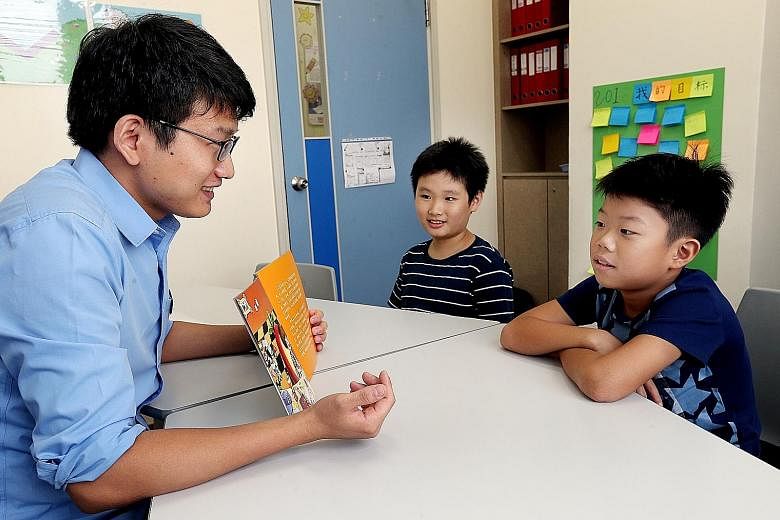Few people in Singapore would have heard of dyslexia, which affects how a person reads and writes, if not for founding Prime Minister Lee Kuan Yew, who was dyslexic.
But, with growing awareness of the condition over the years, more people are seeking help for it.
Last year, a record 3,012 students enrolled in the Dyslexia Association of Singapore's (DAS) main literacy programme - run at its 13 centres - up from 2,465 in 2013.
The programme, co-funded by the Ministry of Education (MOE), aims to improve students' reading, comprehension and writing skills, and help them differentiate between phonemes, or sound units.
DAS, which marks its 25th anniversary this year, has been helping a rising number of students across all ages in recent years.
About 280 pre-school children sought help last year, thrice the 89 in 2013. DAS will also start a programme later this year for post-secondary dyslexic students.
These students will have support from a pool of 30 DAS alumni who will be their mentors and buddies.
Besides the main literacy course, other DAS courses have also seen more participants signing up.
The mathematics classes, for instance, had 266 students last year, up from 90 in 2013. And its speech and drama arts sessions drew 46 students last year, double that in 2013.
DAS expects student numbers to grow at about 10 per cent from this year, in line with growing awareness of dyslexia.
People with dyslexia have difficulty reading, writing and spelling. The condition ranges from mild to severe forms and often occurs alongside other learning disabilities such as attention deficit disorder.
DAS chief executive officer Lee Siang said global figures show 4 per cent of each cohort of students suffer from dyslexia in a severe enough form to warrant intervention.
This means 23,000 primary and secondary school students here are estimated to have the condition.
DAS assessed more than 900 students in each of the past three years, about two-thirds of whom were diagnosed with dsylexia.
To meet demand, DAS has hired more educational therapists and speech and learning therapists. It has 152 of them now, and is looking to recruit more teachers.
Mr Lee was appointed in January to the board of directors of the United States-based International Dyslexia Association (IDA), a first for a Singaporean and Asian.
He hopes to tap the insights of the IDA, as well as its 24 partner associations, for novel ways to support people with dyslexia.
"Besides helping children with their basic reading and spelling, we should be moving to some of the higher-order skills in literacy such as reading comprehension and essay writing," he said.
"We should also be helping children in other subject areas because dsylexia does not just impact the English language."
The work by DAS complements MOE's efforts, said Mr Lee.
MOE piloted the Dyslexia Remediation Programme in 20 primary schools in 2012. It is expected to be extended to all primary schools this year.
Mr Lee Hong Ping, 46, said his Primary 5 daughter, diagnosed with dyslexia at six, is doing better in school after joining DAS' classes.
"She had Cs in lower primary for English, but now she gets Bs and the occasional As," said the head of business development in a German engineering and construction firm.
Early intervention is key, he said. "If we were not alerted to her difficulties in kindergarten, she might be doing worse now."


